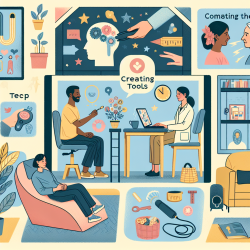Understanding Brain-Behavior Relationships: Insights from CCA and PLS
As a speech-language pathologist, understanding the intricate relationships between brain structure and behavior is crucial for designing effective interventions. Recent research titled Comparing the stability and reproducibility of brain-behavior relationships found using Canonical Correlation Analysis and Partial Least Squares within the ABCD Sample offers valuable insights into these relationships. By leveraging data-driven approaches like Canonical Correlation Analysis (CCA) and Partial Least Squares (PLS), practitioners can enhance their understanding of brain-behavior dynamics, leading to better outcomes for children.
What the Research Reveals
The study compares CCA and PLS in analyzing brain-behavior relationships using data from the Adolescent Brain Cognitive Development (ABCD) dataset. The dataset includes over 9,000 children aged 9-11, providing a robust sample for examining these relationships. The research focuses on two main analyses: the relationship between cortical thickness and behavioral measures from the Child Behavior Checklist (CBCL), and the relationship between cortical thickness and cognitive performance measures from the NIH Toolbox.
Results indicate that while both CCA and PLS identify significant brain-behavior relationships, their stability and reproducibility vary. For instance, when examining CBCL scores, both methods showed limited stability and reproducibility. However, when analyzing cognitive performance, both methods revealed stable and reproducible relationships.
Implications for Practice
These findings suggest that the choice of behavioral measures significantly impacts the generalizability of brain-behavior relationships. Performance-based measures, like those from the NIH Toolbox, may offer more reliable insights compared to parent-reported measures like the CBCL. For practitioners, this means that incorporating objective performance measures in assessments could lead to more consistent and generalizable findings.
Furthermore, the study highlights the importance of large sample sizes and robust statistical methods in brain-behavior research. Practitioners should consider these factors when designing interventions or conducting further research.
Encouraging Further Research
The research underscores the need for continued exploration of brain-behavior relationships using advanced statistical methods. Practitioners are encouraged to delve deeper into the data, exploring how different variables and sample characteristics influence these relationships. By doing so, they can contribute to a more nuanced understanding of child development and tailor interventions to meet the unique needs of each child.
To read the original research paper, please follow this link: Comparing the stability and reproducibility of brain-behavior relationships found using Canonical Correlation Analysis and Partial Least Squares within the ABCD Sample.
Conclusion
In conclusion, the research provides valuable insights into the stability and reproducibility of brain-behavior relationships. By leveraging data-driven approaches like CCA and PLS, practitioners can enhance their understanding of these relationships, leading to better therapeutic outcomes for children. As we continue to explore these complex dynamics, the potential for creating positive impacts in child development is immense.










